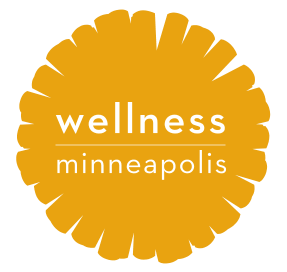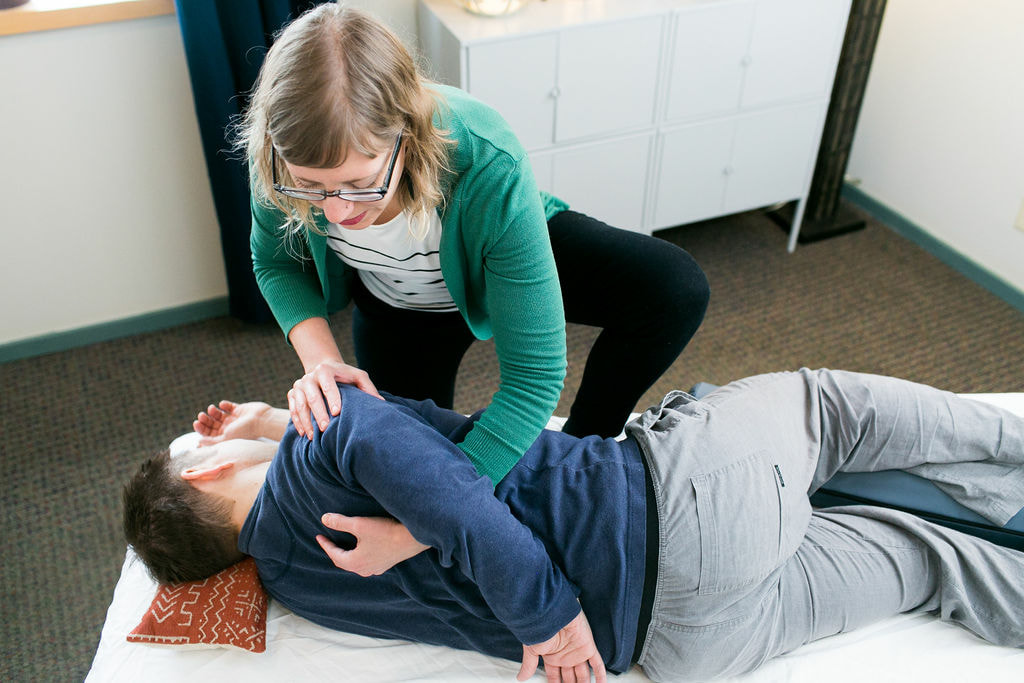Authored by Amy Daws CMT, CST
I don’t like to pick bodywork favorites, but shiatsu is pretty magical. To quote one of my teachers,”If massage and acupuncture had a baby, it would be shiatsu.”
Well, that sounds good, right?!
The form of shiatsu that I work with the most is based in Traditional Chinese Medicine and called Shiatsu Anma. This form takes into account the whole body (physical, emotional, and energetic) when developing a treatment. A person might book a shiatsu treatment for a myriad of concerns including chronic physical pain and tension, pain from an injury or accident, headaches, sleep or digestive issues. Chinese Medicine considers any pain or dysfunction in the body as a symptom of imbalance.
Shiatsu means “finger pressure,” and most techniques are applied with the thumb, fingers, or palms of hand pressing into the body. Kneading techniques may also be used and joint mobilization and stretching is an integral part of most treatments. Shiatsu treatments focus on restoring balance by working on the meridians (energy pathways) and specific points along the meridian.
What will you experience during a treatment?
A thorough intake is done on the first visit. This includes discussing your main concern and any related areas that may help me get a clear picture of your current and past health history. I will look at your tongue and take your pulses. Tongue and pulse diagnosis is a common way for a Traditional Chinese Medicine practitioner to get a clear understanding of where you may be struggling with balance.
During the treatment, you will remain fully clothed. No lotion or oil is used, except for occasionally on the neck or abdomen. Staying fully clothed can make this an exceptionally accessible form of bodywork for those that have mobility issues, past trauma, are shy about practitioners working directly on their skin, or just don’t enjoy the oily massage feeling. It’s best to wear something that is loose and comfortable. In the same way, that therapeutic massage techniques can be performed more gently or more deeply, shiatsu also works at varied levels in the tissue. I always encourage clients to give me feedback about pressure.
The whole body will be addressed during a treatment. The reason for this is that shiatsu focuses on the meridian system of the body and also that bodies function as a whole, not in parts. The meridians run in different lengths and pathways throughout the body. During a treatment, I work on the area that you are experiencing pain as well as the whole length of the meridian and/or any meridians that may be involved to create a smooth flow of Qi (energy) and other vital substances in the body.
What happens afterwards?
Post treatment effects vary from person to person and are based on your sensitivity as well as the treatment itself. Most often people feel more balanced and grounded after a shiatsu session. Muscular pain and tension should be decreased and you may notice your sleep or digestion improved. Like any other forms of bodywork you will most likely have marked changes right away and may continue feeling the work unravel for 24-48 hours after the session. It’s always a good idea to drink extra water and take it easy after any bodywork. If you enjoy baths, taking an Epsom salt bath or a relaxing walk after your treatment can be beneficial. Each person and situation is different in regards to the way that they respond to a treatment. Follow up work may be needed and I always encourage regular treatments (usually every 4-6 weeks) for folks interested in continuing to explore the magic of shiatsu.
Well, that sounds good, right?!
The form of shiatsu that I work with the most is based in Traditional Chinese Medicine and called Shiatsu Anma. This form takes into account the whole body (physical, emotional, and energetic) when developing a treatment. A person might book a shiatsu treatment for a myriad of concerns including chronic physical pain and tension, pain from an injury or accident, headaches, sleep or digestive issues. Chinese Medicine considers any pain or dysfunction in the body as a symptom of imbalance.
Shiatsu means “finger pressure,” and most techniques are applied with the thumb, fingers, or palms of hand pressing into the body. Kneading techniques may also be used and joint mobilization and stretching is an integral part of most treatments. Shiatsu treatments focus on restoring balance by working on the meridians (energy pathways) and specific points along the meridian.
What will you experience during a treatment?
A thorough intake is done on the first visit. This includes discussing your main concern and any related areas that may help me get a clear picture of your current and past health history. I will look at your tongue and take your pulses. Tongue and pulse diagnosis is a common way for a Traditional Chinese Medicine practitioner to get a clear understanding of where you may be struggling with balance.
During the treatment, you will remain fully clothed. No lotion or oil is used, except for occasionally on the neck or abdomen. Staying fully clothed can make this an exceptionally accessible form of bodywork for those that have mobility issues, past trauma, are shy about practitioners working directly on their skin, or just don’t enjoy the oily massage feeling. It’s best to wear something that is loose and comfortable. In the same way, that therapeutic massage techniques can be performed more gently or more deeply, shiatsu also works at varied levels in the tissue. I always encourage clients to give me feedback about pressure.
The whole body will be addressed during a treatment. The reason for this is that shiatsu focuses on the meridian system of the body and also that bodies function as a whole, not in parts. The meridians run in different lengths and pathways throughout the body. During a treatment, I work on the area that you are experiencing pain as well as the whole length of the meridian and/or any meridians that may be involved to create a smooth flow of Qi (energy) and other vital substances in the body.
What happens afterwards?
Post treatment effects vary from person to person and are based on your sensitivity as well as the treatment itself. Most often people feel more balanced and grounded after a shiatsu session. Muscular pain and tension should be decreased and you may notice your sleep or digestion improved. Like any other forms of bodywork you will most likely have marked changes right away and may continue feeling the work unravel for 24-48 hours after the session. It’s always a good idea to drink extra water and take it easy after any bodywork. If you enjoy baths, taking an Epsom salt bath or a relaxing walk after your treatment can be beneficial. Each person and situation is different in regards to the way that they respond to a treatment. Follow up work may be needed and I always encourage regular treatments (usually every 4-6 weeks) for folks interested in continuing to explore the magic of shiatsu.


 RSS Feed
RSS Feed